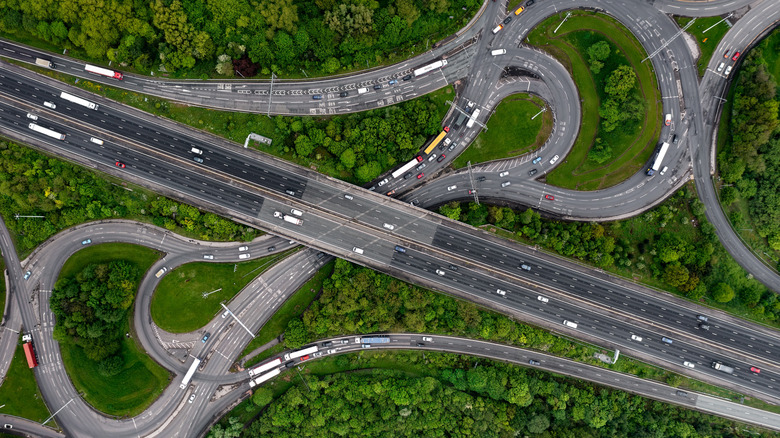Are Motorways In England The Same As Highways In The US? It's Complicated
If you've never driven in both England and the U.S., it's easy to assume that motorways and highways are basically the same. But just like highways versus freeways, the differences definitely add up. From signage and speed limits to who can actually use them, these two types of roads follow their own set of rules.
Motorways in England are sealed, making them more durable, for getting around fast and covering long distances. They're wide with several lanes going each way, so traffic flows smoothly. You have to use special slip roads to enter and exit the motorway, which keeps things safer and less confusing. No pedestrians, bikes, or slow vehicles are allowed, so it's all about motor traffic. There's also a hard shoulder for emergencies, and the blue signs and 70 miles per hour speed limit help drivers know they're on a proper motorway built for speed.
In the U.S., the word "highway" essentially means any public road, whether it's one of the nation's curviest, a quiet neighborhood road, or even bridges and tunnels. It's a really broad term that doesn't say much about how the road is made or who can use it. Because of that, highways can look and feel very different depending on where you are, with speed limits and rules changing from place to place. So unlike England's motorways, which are a very specific kind of road, highways in the U.S. are kind of an all-purpose word for lots of different roads.
England's motorways evolved with smart technology
Unlike the United States' routes and interstate systems, Britain's roads evolved into the country's motorway network beginning with the Preston by-pass in 1958. Over the next decade, the motorways quickly grew with major routes like the M1, M4, M5, M6, M50, and M90 linking key cities across England, Scotland, and Wales. Since then, hundreds of motorway sections have opened, stretching from the M90 in the north near Perth to the M5 in the south at Exeter.
The roads keep evolving as well, like the M42, which became the first smart motorway in 2006, using tech to help ease traffic and keep things moving during busy times. It can adjust speed limits on the fly, show warning signs for things like accidents or heavy traffic, and even close lanes to let emergency vehicles through. The idea is to make better use of the space already there, without always needing to build new lanes.
But with breakdowns harder to manage and safety systems failing more often than expected, the government decided to put the brakes on building more smart motorways in 2023. Thanks to growing public pressure, the British are now instead focusing on fixing existing problems with the smart system.

